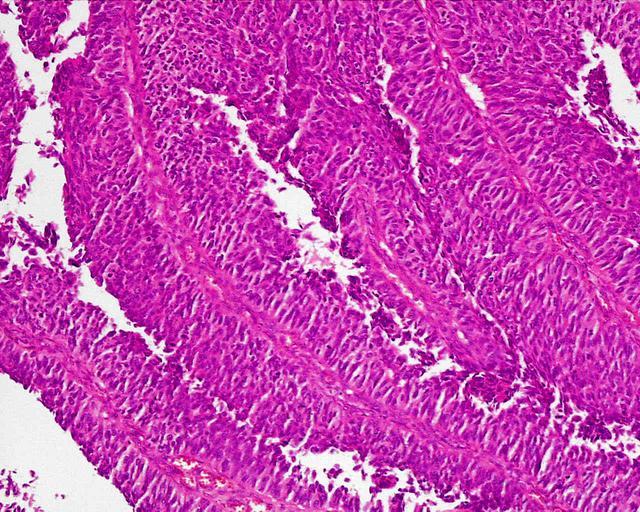Texas Bladder Cancer Lawyer Jason Coomer Represents Survivors of Bladder Cancer and Families of Those Who Lost A Love One to Bladder Cancer Caused By Dangerous Products by Texas Bladder Cancer Lawyer Jason Coomer
Several dangerous products increase the risk of bladder cancer. Manufactures of these products should warn consumers of these bladder cancer dangers and remove dangerous products from the market. The FDA, scientists, and numerous lawyers are working to identify products that cause bladder cancer and remove them from the market. If you or a loved one have recently been diagnoses with bladder cancer, please feel free to contact Bladder Cancer Lawyer Jason Coomer for a free review of your potential case. Additionally, if you have lost a loved one from bladder cancer, please also feel free to contact my office for a free review of your potential bladder cancer lawsuit. For more information on bladder cancer lawsuits, please feel free to e-mail Bladder Cancer Lawyer via e-mail message or use our online form for a free case evaluation.

The Most Common Warning Sign of Bladder Cancer is Blood in the Urine
Most bladder cancers begin in the transitional cells as transitional cell carcinoma, but can spread into nearby organs. When bladder cancer spreads beyond the bladder, the malignant cells are frequently found in nearby lymph nodes and may have spread to other lymph nodes or other places including the lungs, liver, or bones. The most common warning sign is blood in the urine. If there is enough blood to color the urine it may range from slightly rusty to deep red. Other symptoms may be pain during urination and frequent urination or feeling the need to urinate without results.
Early Detection of Bladder Cancer is Important, Often Treatable, and Can Help Prevent Its Spread
Bladder cancer can be diagnosed into several different stages. Stage 0 Bladder Cancer patients have noninvasive tumors that are only in the bladder lining; Stage I Bladder Cancer Patients have tumor(s) through the bladder lining, but the tumor(s) do not reach the muscle layer of the bladder; Stage II Cancer Patients have tumor(s) that go into the muscle layer of the bladder; Stage III Cancer Patients have tumor(s) that go past the muscle layer into tissue surrounding the bladder; and Stage IV Bladder Cancer Patients have tumor(s) that have spread to neighboring lymph nodes or to distant sites (metastatic disease) including the lungs, liver, bones, prostate, stomach, rectum, ureters, uterus, and vagina.
Primary malignant bladder cancer can be classified by health care providers in several different categories depending on where it is found including the dome of urinary bladder; lateral wall of urinary bladder; anterior wall of urinary bladder; posterior wall of urinary bladder; bladder neck; ureteric orifice; urachus; and malignant neoplasm of contiguous or overlapping sites of bladder whose point of origin cannot be determined.
Carcinoma in situ is cancer that remains confined to the bladder lining. Bladder cancer may grow into or through the bladder wall and eventually into lymph nodes, lungs, liver, bones, or other nearby areas. Please keep in mind that bladder cancer can spread and metastasize into the lungs, liver, or bones resulting in serious health issues and even death. The most common symptom of bladder cancer is blood in the urine. If you or a loved one have experienced blood in your urine, please contact your doctor immediately.
Bladder Cancer Often Causes Many Symptoms That Can Be Difficult To Identify As Cancer Related
Bladder cancer can manifest through many different symptoms. Most of these symptoms can also occur with non-cancerous conditions. However, if you have these symptoms and a suspect bladder cancer, it is important to get evaluated by a qualified medical doctor to determine, if you may have bladder cancer. Some of these symptoms include: 1) Blood in the urine, 2) Painful urination, 3) Urinary frequency, 4) Urinary urgency, 5) Abdominal pain, 6) Anemia, 7) Bone pain or tenderness, 8) Lethargy or fatigue, 9) Urinary incontinence, and 10) Weight loss.
People With Bladder Cancer Symptoms, Family History of Bladder Cancer, and/or Significant Exposure History Should Discuss Their Risks and Screenings With a Physcian and Be Tested
Testing for bladder cancer can include performing 1) a physical examination, including a rectal and pelvic exam, 2) Abdominal CT scan, 3) Bladder biopsy (usually performed during cystoscopy), 4) Cystoscopy (examining the inside of the bladder with a camera), 5) Intravenous pyelogram - IVP, 6) Urinalysis, and 7) Urine cytology.
Bladder Cancer Classifications and Stages
Bladder cancers are classified, or staged, based on their aggressiveness and how much they differ from the surrounding bladder tissue. There are several different ways to stage tumors. Recently, the TNM (Tumor, Nodes, Metastasis) staging system has become common. Stage 0 Bladder Cancer patients have noninvasive tumors that are only in the bladder lining; Stage I Bladder Cancer Patients have tumor(s) through the bladder lining, but the tumor(s) do not reach the muscle layer of the bladder; Stage II Cancer Patients have tumor(s) that go into the muscle layer of the bladder; Stage III Cancer Patients have tumor(s) that go past the muscle layer into tissue surrounding the bladder; and Stage IV Bladder Cancer Patients have tumor(s) that have spread to neighboring lymph nodes or to distant sites (metastatic disease) including the lungs, liver, bones, prostate, stomach, rectum, ureters, uterus, and vagina. Bladder cancer can metastasize or spread by extending into the nearby organs or through the lymph nodes. It can spread into the Prostate, Rectum, Ureters, Uterus, Vagina, Bones, Liver, and Lungs.
Bladder Cancer Treatments
There are several types of treatment for bladder cancer. The selection of treatment for bladder cancer will vary depending on the patient, health care provider, and stage of bladder cancer. In Stages 0 and I, surgery is usually performed to remove the tumor without removing the rest of the bladder. Also, chemotherapy or immunotherapy can be applied directly into the bladder. People with stage 0 or I bladder cancer can be treated with transurethral resection of the bladder (TURB). This surgical procedure is performed under general or spinal anesthesia. A cutting instrument is inserted through the urethra to remove the bladder tumor.
Bladder Cancer Stage II and III Treatments
In Stages II and III treatment, chemotherapy can be used to shrink the tumor before surgery, then surgery can be performed to remove the entire bladder (radical cystectomy) or surgery can be performed to remove only part of the bladder, followed by radiation and chemotherapy. For bladder cancer patients that cannot have surgery or choose not to have surgery, a combination of chemotherapy and radiation can be used.
Many people with stage II or III bladder cancer may need to have their bladder removed (radical cystectomy). Partial bladder removal may be performed in some patients. Removal of part of the bladder is usually followed by radiation therapy and chemotherapy to help decrease the chances of the cancer returning. Patients who have the entire bladder removed will receive chemotherapy after surgery to decrease the risk of the cancer coming back.
Radical Cystectomy or Urinary Diversion Surgery Is Sometimes Necessary for Treatment of Bladder Cancer
Radical cystectomy in men usually involves removing the bladder, prostate, and seminal vesicles. In women, the urethra, uterus, and the front wall of the vagina are removed along with the bladder. Often, the pelvic lymph nodes are also removed during the surgery to be examined in the laboratory.
A urinary diversion surgery (a surgical procedure to create an alternate method for urine storage) is usually done with radical cystectomy. Two common types of urinary diversion are an ileal conduit and a continent urinary reservoir. An ileal conduit is a small urine reservoir that is surgically created from a small segment of bowel. The ureters that drain urine from the kidneys are attached to one end of the bowel segment. The other end is brought out through an opening in the skin (a stoma). The stoma allows the patient to drain the collected urine out of the reservoir. People who have had an ileal conduit need to wear a urine collection appliance outside their body at all times. A continent urinary reservoir is an alternate method of storing urine. A segment of colon is removed. It is used to create an internal pouch to store urine.
This surgery is becoming more common in patients undergoing cystectomy. A segment of bowel is folded over to make a pouch (a neobladder, which means "new bladder"). Then it is attached to the place in the urethra where the urine normally empties from the bladder. This procedure allows patients to maintain some normal urinary control. However, there are complications (including urine leakage at night). Urination is usually not the same as it was before surgery.
Chemotherapy, Radiation Therapy and Drug Therapy for Stage IV Bladder Cancer Can Help Extend Life and Health
Unfortunately, for most patients with stage IV tumors, the bladder cancer cannot be cured and surgery will not appropriate. However, in these these later stages of bladder cancer, chemotherapy and radiation therapy as well as some drug treatments can help patients live longer and feel better.
Texas Bladder Cancer Lawyer Works With Other Dangerous Product Cancer Lawyers Throughout the United States
Texas Bladder Cancer Attorney Jason Coomer commonly works with other lawyers throughout Texas, the United States, and the World. They commonly work together on filing large MDLs and other lawsuits against the manufacturers of dangerous drugs that cause cancer including bladder cancer. They are also always looking to identify new information on preventing bladder cancer and helping remove dangerous drugs from the market
Bladder Cancer Lawyer Jason Coomer Works with Bladder Cancer Survivors and Bladder Cancer Families From Throughout The United States on Dangerous Product Lawsuits
If you or a loved one have experienced blood in your urine, please contact your doctor immediately. If you suffer from bladder cancer or have lost a person that you love from a bladder cancer, please feel free to e-mail Bladder Cancer Lawyer Jason Coomer with your name & contact information or use our online form for a free case evaluation
Feel Free to Contact Us with any Questions
Associations




